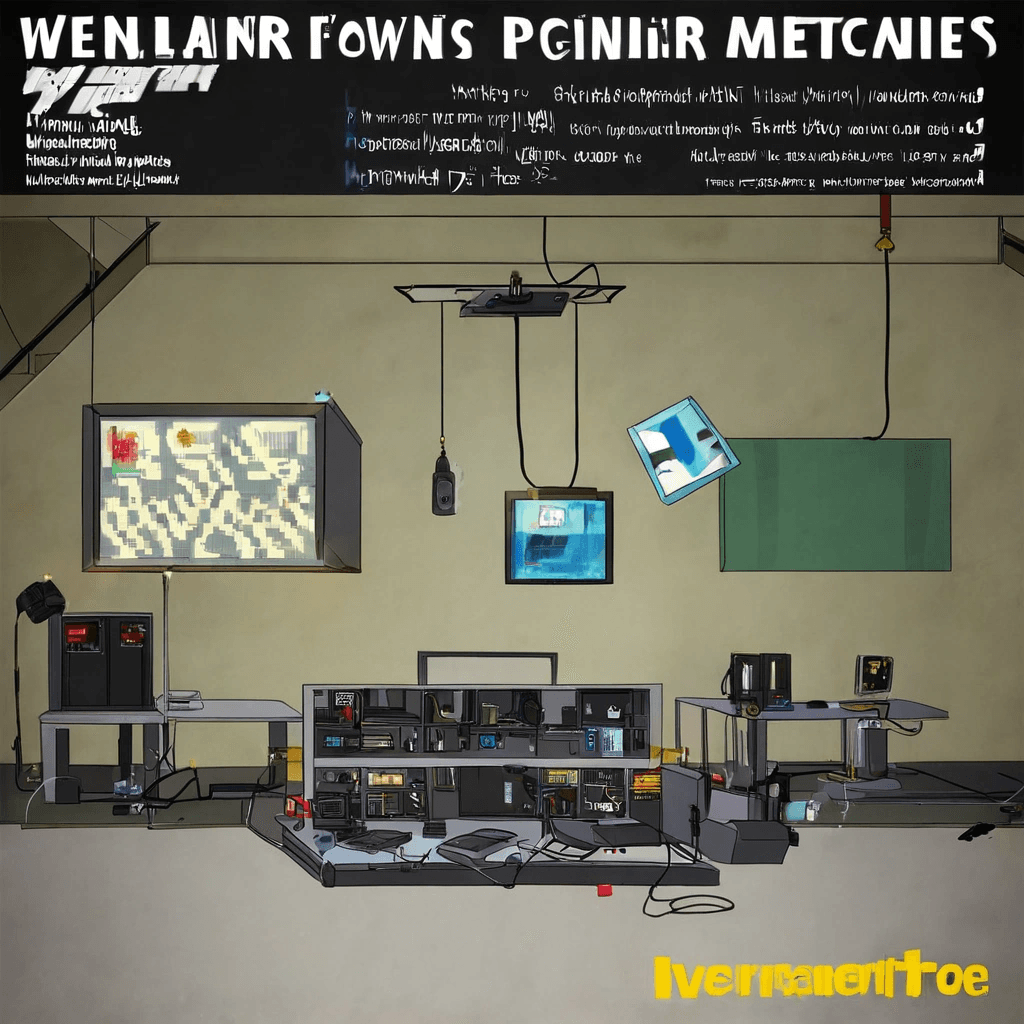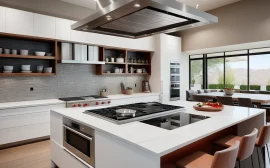Setting the Stage: The Rise of the Immersive Home Theater
In an era defined by on-demand entertainment and the pursuit of unparalleled sensory experiences, the demand for dedicated home theaters has surged. More than just a collection of electronic components, a professionally executed home theater installation represents a meticulously engineered environment calibrated to deliver immersive audio-visual experiences rivaling, and often surpassing, commercial cinemas. This comprehensive guide, tailored for discerning homeowners, forward-thinking interior designers, and tech-savvy enthusiasts, navigates the complexities of crafting such a haven, seamlessly integrating cutting-edge technology with elegant design.
From the foundational principles of home theater design to the nuances of speaker calibration and projector calibration, we will explore the critical elements that transform a standard living space into a private, high-performance entertainment destination. The cornerstone of any exceptional home theater lies in the synergistic integration of audio-visual components and smart home automation. Modern AV receivers, often supporting advanced formats like Dolby Atmos and featuring HDMI 2.1 for pristine 8K resolution, serve as the brains of the operation, directing audio and video signals with unparalleled precision.
However, optimal performance requires careful consideration of factors such as home theater wiring, acoustic treatment, and smart lighting. A poorly wired system can introduce unwanted noise and signal degradation, while inadequate acoustic treatment can lead to muddy sound and distracting reflections. Smart lighting, controllable via voice control or pre-programmed scenes, further enhances the immersive experience by creating the perfect ambiance for movie nights. Beyond the hardware, the true magic of a professional home theater emerges from meticulous calibration and optimization.
Expert technicians employ specialized tools and techniques to fine-tune every aspect of the system, from speaker levels and equalization to projector settings and screen alignment. This process ensures that every seat in the room enjoys a consistent and accurate audio-visual presentation. Furthermore, seamless integration with existing smart home ecosystems allows for effortless control of lighting, temperature, and even motorized shades, creating a truly personalized and automated cinematic experience. Addressing potential issues through proactive home theater troubleshooting ensures long-term performance and enjoyment.
Needs Assessment and System Design: Crafting the Perfect Blueprint
The foundation of any exceptional home theater lies in a thorough needs assessment and a well-conceived system design. This process begins by understanding the client’s specific requirements: What type of content will be primarily consumed – blockbuster movies, immersive gaming, high-fidelity music, or a mix? How many viewers will typically be present, influencing seating arrangements and screen size considerations? What is the desired aesthetic, ranging from a dedicated, darkened room to a more integrated living space?
These answers dictate equipment selection and overall home theater design. Speakers should be chosen based on room size, desired soundstage, and listening preferences. Consider options from Dolby Atmos-enabled systems with overhead speakers for immersive surround sound to more discreet in-wall or on-wall speakers for a minimalist design. Proper speaker calibration is crucial, regardless of the chosen configuration, to ensure balanced audio across all listening positions. Projectors and screens require careful consideration of room lighting and viewing distance.
For dedicated home theaters with controlled lighting, a traditional projection screen can deliver stunning image quality. However, for rooms with uncontrolled ambient light, an ALR (Ambient Light Rejecting) screen is crucial for maintaining contrast and color saturation. Screen size should be determined by viewing distance, with a general rule of thumb being a 1-inch diagonal screen size per foot of viewing distance. Projector calibration is equally important, ensuring accurate color reproduction and optimal brightness levels.
The AV receiver acts as the central hub, processing audio and video signals from various sources. Ensure it has sufficient power to drive the chosen speakers and supports the latest audio and video formats, including Dolby Atmos, DTS:X, and HDMI 2.1 for compatibility with 8K resolution content and next-generation gaming consoles. Room acoustics are paramount to achieving optimal audio-visual integration. Hard surfaces reflect sound, creating echoes and muddying the audio. Acoustic panels strategically placed on walls and ceilings can absorb these reflections, improving sound clarity and reducing reverberation.
Bass traps placed in corners help to control low-frequency sound waves, preventing boomy or muddy bass. Even strategically placed furniture, such as plush couches and thick carpets, can contribute to acoustic treatment. Consulting with an acoustic specialist is highly recommended, especially for dedicated home theater rooms, to perform detailed acoustic measurements and recommend tailored solutions. Integrating smart home automation adds another layer of convenience and control to the home theater experience. Smart lighting can automatically dim when a movie starts, creating the perfect ambiance, while voice control allows for hands-free operation of the entire system.
Home theater wiring is also a critical component of the system design. Planning for proper cable management during the initial design phase can prevent headaches down the road. Running high-quality HDMI cables through conduit protects them from damage and allows for future upgrades. Consider incorporating a structured wiring panel to centralize all connections and ensure a clean and organized installation. Furthermore, integrating the home theater with a smart home system unlocks possibilities for automated scenes and customized control. For example, a “movie night” scene could automatically dim the lights, lower the screen, and adjust the thermostat to a comfortable temperature, all with a single voice command. Smart home troubleshooting features can also be integrated to remotely diagnose and resolve common issues, ensuring a seamless and enjoyable home theater experience.
Wiring and Infrastructure: The Invisible Backbone of Performance
Behind the sleek facade of a modern home theater lies a complex network of wiring and infrastructure, the unsung hero of a truly immersive experience. Proper cable management transcends mere aesthetics; it’s a cornerstone of signal integrity and overall system reliability, directly impacting audio-visual performance. Employing high-quality, certified HDMI 2.1 cables is paramount for transmitting pristine 8K resolution video and high-bandwidth audio formats like Dolby Atmos. These cables should ideally be run through dedicated conduit during home theater installation to shield them from physical damage, electromagnetic interference, and to facilitate future upgrades or replacements without disrupting the entire setup.
Thoughtful home theater wiring is an investment in longevity and performance. Power conditioning is equally critical, safeguarding sensitive electronic equipment from the unpredictable nature of electrical grids. Power surges and voltage fluctuations can wreak havoc on AV receivers, projectors, and other components, leading to premature failure. A dedicated surge protector, preferably one with advanced filtering capabilities, or a UPS (Uninterruptible Power Supply) provides a crucial buffer against these threats. Furthermore, a UPS offers the added benefit of providing temporary power during outages, preventing abrupt shutdowns that can corrupt data or damage hardware.
Integrating power management into the home theater design is a proactive measure that minimizes downtime and extends the lifespan of valuable equipment. Network connectivity forms the backbone of smart home automation and access to streaming content. A stable and robust network is essential for seamless operation. While Wi-Fi offers convenience, a wired Ethernet connection to the AV receiver, smart TVs, and streaming devices provides superior bandwidth and reduced latency, crucial for uninterrupted playback of high-resolution content.
Consider utilizing a network switch to expand the number of available Ethernet ports, especially if integrating multiple smart devices. Furthermore, implementing a robust, dedicated home network for your audio-visual integration ensures that bandwidth-intensive streaming does not interfere with other smart home functions. Finally, meticulous labeling of all cables is an often-overlooked but invaluable practice. Clear labeling simplifies troubleshooting during home theater troubleshooting and future maintenance, saving time and frustration. Use a labeling machine to create durable, easy-to-read labels for each cable, indicating its source and destination. Detailed documentation of the entire wiring scheme, including cable types and connections, will further streamline any future modifications or repairs. This proactive approach to organization ensures the long-term serviceability and adaptability of your home theater installation.
Calibration and Optimization: Fine-Tuning for Audio-Visual Perfection
Once the system is installed, calibration and optimization are critical to unlocking its full potential. Audio calibration involves using specialized tools, such as a sound level meter and calibration microphone, to adjust speaker levels, equalization, and delay settings. Software like Audyssey MultEQ XT32 (found in many AV receivers) can automate this process, but manual adjustments are often necessary for optimal results, especially when integrating advanced formats like Dolby Atmos. Speaker calibration is paramount for achieving a balanced and immersive soundstage, ensuring that every seat in the home theater benefits from optimal audio-visual integration.
Video calibration involves adjusting the projector or TV’s settings to achieve accurate color reproduction, contrast, and brightness. This requires a colorimeter or spectrophotometer and calibration software like Calman. ISF (Imaging Science Foundation) certification is a recognized standard for video calibration. Pay close attention to grayscale calibration, color gamut accuracy, and gamma settings. Proper calibration ensures that the image displayed is as close as possible to the director’s original intent, maximizing the impact of 8K resolution and HDR content.
Failing to properly calibrate video can negate the benefits of even the most expensive display technology. Beyond basic calibration, acoustic treatment plays a crucial role in optimizing audio performance within the home theater design. Implementing acoustic panels, bass traps, and diffusers can minimize unwanted reflections and standing waves, resulting in clearer dialogue and more impactful sound effects. Furthermore, consider the impact of smart lighting on the viewing experience. Integrating smart home automation allows for precise control over ambient light, reducing glare and enhancing perceived contrast. Voice control integration can further streamline the user experience, enabling effortless adjustment of both audio and video settings. Finally, ensure all components support the latest standards like HDMI 2.1 to future-proof the home theater installation.
Smart Home Integration: Seamless Control and Automation
The modern home theater transcends its role as a mere entertainment zone, evolving into an integral component of the smart home ecosystem. Seamless audio-visual integration with smart lighting systems allows for automated dimming and scene control, crafting the ideal ambiance for movie nights with the touch of a button. Smart climate control, responsive to occupancy sensors and programmed activity, ensures optimal comfort levels throughout the viewing experience. Voice control via assistants like Alexa and Google Assistant empowers users to manage the entire system hands-free, from powering on the projector to precisely adjusting volume levels, revolutionizing the ease of use of home theater installation.
Consider a universal remote control system like Logitech Harmony, or for more advanced home theater design and smart home automation, explore sophisticated control systems such as Crestron or Control4. These platforms offer unparalleled levels of customization, enabling the creation of intricate scenes and the automation of complex sequences. Imagine dimming the lights, closing the motorized shades, activating Dolby Atmos surround sound, and initiating the movie all with a single voice command or button press. This level of integration streamlines the user experience and elevates the home theater from a collection of individual components to a cohesive, intelligent entertainment hub.
Furthermore, advanced smart home automation extends to crucial aspects of home theater performance. Smart power conditioners can protect sensitive equipment from surges and voltage fluctuations, ensuring longevity and optimal performance. Networked AV receivers can be remotely monitored and managed, allowing for proactive troubleshooting and maintenance. Even speaker calibration and projector calibration can be integrated into the smart home system, automatically adjusting settings based on room conditions and user preferences. As home theater wiring becomes increasingly complex with the advent of HDMI 2.1 and 8K resolution, a well-designed smart home system can simplify management and ensure seamless connectivity. This holistic approach to smart home integration not only enhances the user experience but also optimizes the audio-visual performance of the entire home theater system.
Troubleshooting and Future-Proofing: Ensuring Long-Term Performance
Even with the most meticulous home theater installation, problems can arise, demanding a systematic approach to home theater troubleshooting. Audio distortion can stem from various sources, including clipping (overdriving the amplifier), suboptimal speaker placement that creates unwanted reflections, or inherent acoustic issues within the room itself. Implementing acoustic treatment, such as bass traps and diffusers, is often essential to mitigate these problems. Furthermore, incorrect speaker calibration can significantly degrade the audio experience; professional speaker calibration, utilizing tools like Real Time Analyzers (RTAs), ensures accurate frequency response and proper sound staging, especially crucial for immersive formats like Dolby Atmos.
Video lag (latency) remains a persistent challenge, particularly for gamers. This delay between input and on-screen action can be crippling, necessitating careful consideration of display technology. Ensure the projector or TV features a dedicated low input lag mode. Connectivity failures, another common headache, frequently trace back to faulty HDMI cables, network instability, or software glitches within streaming devices or the AV receiver. Prioritize high-quality, certified HDMI 2.1 cables to handle the bandwidth demands of 8K resolution and high refresh rates.
Always methodically check cable connections before delving into network troubleshooting. When issues persist, consult equipment manuals or engage a qualified audio-visual integration specialist. Future-proofing your home theater design is a strategic investment. The rapid evolution of technology necessitates careful planning to avoid obsolescence. While 8K resolution is gaining traction, HDMI 2.1 is the critical interface for unlocking its potential at higher frame rates (60Hz and 4K/120Hz). Consider the scalability of your speaker system; pre-wiring for additional channels allows for seamless expansion into more immersive audio formats in the future.
Smart home automation plays a crucial role in modern home theaters. Integrating smart lighting, voice control, and climate control enhances the overall experience. Explore the possibilities of automated scene control, where a single voice command can dim the lights, adjust the temperature, and start the movie. A modular system design, with components that can be easily upgraded or replaced, provides the flexibility to adapt to future technological advancements. Prioritizing professional home theater wiring during the initial home improvement phase can save significant costs and headaches down the line. By proactively addressing these potential challenges and embracing a forward-thinking approach, you can ensure your home theater remains a source of enjoyment for years to come.



